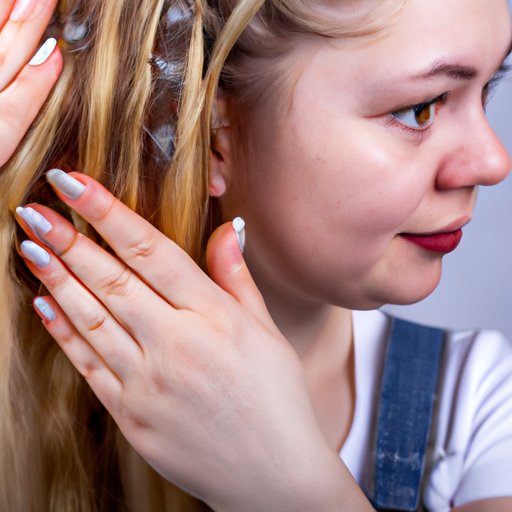
Introduction
Despite being a common problem, lice infestations can be a source of significant discomfort, not to mention the embarrassment they can cause. To make matters worse, many people are unsure how to check themselves for lice. In this article, we provide a comprehensive guide on how to check for lice and offer tips for preventing their spread.
Signs and Symptoms of Lice Infestation
The most common sign of a lice infestation is an itchy scalp. You may also notice redness and swelling on the scalp or neck. Another tell-tale sign of a lice infestation is the presence of lice or nits (eggs) on hair strands. Lice are small, wingless insects that are oval-shaped and about the size of a sesame seed, while nits look like small, white or yellowish dots attached firmly to the hair shaft.
Importance of Early Detection and Prompt Treatment
If left untreated, a lice infestation can quickly spread to others. Lice are highly contagious and can easily transfer from person to person through shared personal items like combs, hats, and headphones. Additionally, scratching the scalp can lead to secondary skin infections, which can cause further discomfort and may require medical treatment.
Step-by-Step Guide to Checking Yourself for Lice
Step 1: Section off the hair – Start by dividing the hair into sections and securing each section with a hair clip or hair tie. This will make it easier to check for lice and nits.
Step 2: Use a fine-toothed comb – Using a fine-toothed comb, begin at the scalp and comb through each section of hair. The comb should be held at a 45-degree angle to the scalp, and each stroke should be made from the scalp to the end of the hair.
Step 3: Inspect the scalp – After combing through each section, use a magnifying glass to inspect the scalp, paying close attention to the area behind the ears and at the nape of the neck. Look for any signs of lice or nits, and use a pair of tweezers to remove any lice or nits you find.
Common Misconceptions About Lice and Debunking Them
One of the biggest myths about lice is that they only affect people who are unclean or have poor hygiene. In reality, lice can affect anyone, regardless of cleanliness. Another common myth is that lice can jump or fly from person to person. Lice cannot jump or fly; they can only crawl from one person to another. Lastly, some people believe that lice infestations are only an issue for children, but lice can affect anyone at any age.
Tips for Preventing the Spread of Lice
The best way to prevent lice infestations is to avoid sharing personal items like combs, hats, and headphones. Additionally, regularly washing bedding, clothing, and personal items in hot water can help kill any lice or nits that may be present. If you or someone in your household has a lice infestation, be sure to treat it promptly to avoid spreading it to others.
Over-the-Counter Treatments for Lice and Their Effectiveness
There are several over-the-counter treatments available for lice, including shampoos and creams that contain pediculicides (lice-killing chemicals). These treatments are typically effective when used as directed, but it is important to follow the instructions carefully to ensure their effectiveness. Additionally, some strains of lice have developed resistance to certain types of pediculicides, so it may be necessary to try a few different treatments to find one that works for you.
When to Seek Professional Help for Lice Treatment
If over-the-counter remedies are ineffective or if the infestation is severe or recurrent, it may be necessary to seek professional treatment for lice. A healthcare provider or lice removal specialist can provide a thorough evaluation and recommend the most appropriate treatment.
Conclusion
Knowing how to check yourself for lice is an essential skill that can help prevent the spread of infestations and the associated discomfort and embarrassment they can cause. By following the steps outlined in this article and taking proactive measures to prevent lice infestations, you can protect yourself and your loved ones from this common but often-misunderstood problem.




